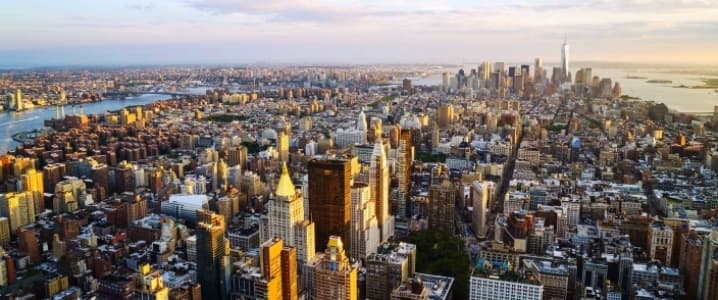New York is turning into a center of attraction for innovative energy technology companies thanks to its US$5-billion plan to generate half of its electricity from renewable sources by 2030, a double increase on the current portion of renewable power.
The change, writes Leslie Kaufman from Inside Climate News, requires a transformation of the New York grid, to incorporate more renewable power generation capacity and to diversify into more distributed energy storage systems. This, in its turn, needs new tech in order to happen.
Energy storage is a hot topic across America. The race for ever more efficient and reliable systems is on, and there are billions of dollars at stake: if the future of energy is renewable, then the basis for this future will be precisely these storage systems, as they turn renewables from intermittent but unreliable sources of energy in the long run to a truly sustainable alternative to fossil fuels.
One of the companies flocking to New York to join the new energy party, Opus One, for example, makes software that can analyze how the ramp-ups and downs of renewable energy production from intermittent sources such as solar and wind interact with power flows from fossil fuel power generation and can also make real-time estimates of the price for renewable energy power.
Opus One and its likes are very welcome in New York, and the state is spending quite heavily on motivating them to continue to be innovative. Since the beginning of this year alone, the authorities have spent some US$41.5 million in grants to energy tech companies. That’s in addition to a US$14-million investment in energy tech incubators since 2009. Around 155 companies participating in these incubators have attracted private investments of US$284 million.
The state is also incentivizing local utilities, prompting a major shift in the way things are done. After decades of government support for an ever-growing amount of power sales, now the authorities of New York are offering utilities incentives to boost energy efficiency instead of just electricity sales. Related: How Much Will Inventories Shrink Post As OPEC Extends Cuts?
Among these incentives is a partial reimbursement of the energy savings brought about by energy efficiency project that effectively cut demand for the utilities’ product. Another move is increasing the utilities return on investment in equipment for the addition of more renewables-sourced power to the grid.
Amid all these efforts towards a greener energy future, one challenge looms large: the discrepancy between upstate and downstate consumption, the energy mix, and prices. According to Brad Jones, CEO of the New York Independent System Operator, upstate New York has lower energy demand and a lot more of its electricity is produced from renewables sources – as much as 85 percent. Non-renewable sources are not really competitive in the local low-price environment, and investors have no motivation for expanding or upgrading capacity.
In contrast, downstate New York relies mostly on fossil fuel generation capacity, and demand for energy is much higher. However, due to the specificities of the power transmission system in the state, renewable power cannot flow into downstate New York in sufficient amounts to reduce this dependence on fossil fuels.
The way to close the gap, Jones says, is by upgrading and expanding the state’s transmission system, combining central power generation with distributed systems, and leveraging renewable power in the most efficient way.
ADVERTISEMENT
By Irina Slav for Oilprice.com
More Top Reads From Oilprice.com:
- The OPEC Elixir Wasn’t Potent Enough
- Is Goldman Sachs Playing With Fire In Venezuela?
- Is The U.S. Getting Left Behind In The Renewable Race?



















Murphy's Law, you know. Balancing the grid, anyone?
https://www.theguardian.com/uk/2000/sep/21/paulbrown
The intermittent nature of distributed 'renewable' electric generation sources (typically wind & solar) make regulation and end-use difficult but CAN be 'balanced' by storage - holding some power in reserve - as is commonly done in 'pumped-storage hydroelectric' generating plants where natural reservoirs are unavailable (typical 'natural' reservoir created by a hydroelectric dam).
Unfortunately, once the electric power is produced the ONLY way to 'store' it is in electrochemical cells or 'batteries'. But in-order to store the quantity of electric power available from all those wind-turbines and solar-arrays NYS would need acres of batteries (using conventional technology).
A more intelligent alternative would be using all that renewable energy in an electrolysis system - pumping water into the system and splitting it into its constituent elements of Hydrogen and Oxygen, compressing and pumping those gases into storage tanks from which the end-users (local mains electrics suppliers) can draw and 'burn' them in more advanced 'electric-gensets' and/or fuel-cells.
THIS option enables the storage of energy, 'balances' electric supply from intermittent sources, produces no pollutants, makes supply impervious to international 'incidents' AND can lower energy prices while increasing profits!